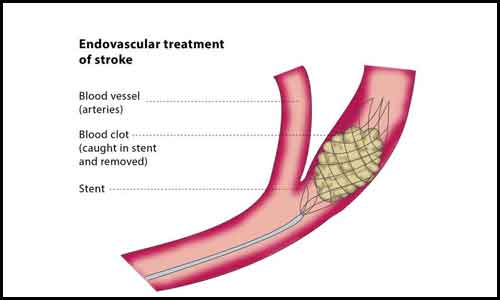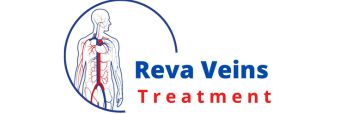What is endovascular aneurysm repair?
Endovascular aneurysm repair involves inserting a graft within the aneurysm through small groin incisions using X-rays to guide the graft into place.
The advantage of this type of repair is that there is no abdominal surgery. This technique is therefore safer than traditional surgery and you spend less time in the hospital. One disadvantage is that some patients may have to undergo additional surgery at a later date to refine the initial procedure.

Not every patient or every aneurysm is suitable for EVAR. In particular, aneurysms arising close to or above the kidneys are more difficult to treat in this way. You will be assessed with a scan to determine if your aneurysm can be treated by endovascular repair. If suitable you will be offered a choice of type of repair by your surgeon. If this cannot be undertaken at your local hospital, you may need to travel to a centre that can perform endovascular repair.
Complications: The risk of major complications is lower with endovascular repair because the operation does not affect the circulation as much as open surgery. However, graft fixation is not as secure as with open surgery. As a result, you may need to run scans to make sure the graft hasn’t slipped out of place. It is estimated that about 1 in 10 patients may need further intervention or surgery on their transplant.
Recovery: After a straightforward endovascular repair, most patients return to the hospital ward for one to three days. You should be able to eat and drink normally once you are fully awake after your aneurysm repair. The nurses will do their best to get you sitting and walking as quickly as possible. You should be able to leave the hospital once you get up, but you may need pain relievers for up to a week.
Conversations with patients who have undergone endovascular repair suggest that it may be normal to fully recover in about two weeks. However, some people take longer and may get tired and take several months to return to the state of health they were in before surgery. During this time, you should gradually return your activity level to normal. You can resume normal sexual relationships as soon as you are comfortable.
Returning to work: Most people treated with endovascular repair can return to work within a month of surgery. If you drive for work, please see the section on driving near the end of this information page.
Is the operation successful?
If aneurysms are successfully repaired, it will keep them from blocking or rupturing and there is a very high chance you will be able to return to normal life. Full recovery takes between 3 and 6 months after open surgery and 2 to 4 weeks after endovascular repair. The rate of recovery is also affected by your age and general fitness.
What are the risks of surgery?
As with any major surgery, general complications, including wound infection, chest infection, or diarrhea, can occur.
There is a small risk of medical complications such as:
Heart attack
stroke
Kidney failure
Breast problem
Loss of circulation in the legs or intestines
Infection of the graft to replace your aorta
Up to 1 in 10 men may have difficulty maintaining an erection after surgery because of an injury to the nerves that line the front of the aorta. It is also recognized to occur after an endovascular repair. If you have any problems with this, please let your doctor know as there are treatments that can help.
Deep vein thrombosis (DVT) is a recognized risk and most patients are treated to prevent it during their hospital stay. If you develop DVT, you may need additional treatment, which can extend your hospital stay
If your risk of a serious complication is higher, usually because you already have a serious medical problem, your surgeon will discuss this with you. It is important to remember that your surgeon will only recommend treating your aneurysm if he or she believes that the risk of aneurysm rupture is greater than the threat from the surgery. Your surgeon can tell you the success rate for this operation in his unit.
Consent to the storage of your personal data
Vascular surgeons record information about surgical procedures, including AAA repairs, in the National Vascular Database (NVD). This is a secure database that can be used to monitor and improve vascular services across the country. As a result, you (or your immediate relative) may be asked to give permission for your personal information to be stored on the NVD. Although the database is a national system, strict data management means that only employees who are directly involved in the treatment of a person can access personal data of the NVD. Patient information is confidential and will not be shared with anyone who is not directly involved in caring for an individual. You need to confirm with your vascular surgeon whether you are happy that he is storing your personal information on the NVD.
What can i do to help myself?
Tuxedo. If you are a smoker, the most important thing you can do to help yourself quit smoking (see Reference 1 below). When you stop smoking, you are also protecting all of your arteries so you are less likely to have a heart attack or stroke. Giving up is not easy, but there are smoking cessation services and support groups that can help. Your vascular specialist or family doctor can advise you on this.
Inactivity. Gentle exercises like walking and cycling are recommended to improve your overall fitness. Exercise helps your body produce healthy cholesterol, and this helps protect your arteries from bad cholesterol.
High blood pressure. High blood pressure is a known risk factor for aneurysm rupture. It is very important that you have your blood pressure checked regularly at least every 6 months (see references 2 and 3 below). If you have been prescribed medication for high blood pressure, you need to make sure that you are taking them as directed.
Diabetes. If you have diabetes, it is important that your blood sugar levels are well controlled.
High blood cholesterol (fatty substance) in your blood. You should eat a healthy and balanced diet and try to lose excess weight. It is important to lower the level of cholesterol in your blood: you will receive advice on how to do this. Your vascular nurse can refer you to a nutritionist if necessary. You may be prescribed a statin medication to lower your cholesterol and low-dose aspirin to prevent blood clots from forming.
Driving with an AAA
If you have a small AAA (<5.5 cm), you can continue driving. The DVLA should be notified when your aneurysm is 6 cm in diameter and you are allowed to continue driving if you have received satisfactory medical treatment and there is no further enlargement of your AAA. When your AAA reaches 6.5 cm in diameter, you will be banned from driving (see Reference 4 below).
Truck drivers will be banned from driving if their AAA is> 5.5 cm, but can continue driving if AAA has been successfully treated (see Reference 4 below).
